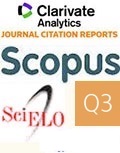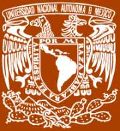|
Boletín de la Sociedad Geológica Mexicana Volumen 66, núm. 3, 2014, p. 459-469 http://dx.doi.org/10.18268/BSGM2014v66n3a4 |
 |
Freshwater mollusks of the Valley of Sobaco, Coahuila, Northeastern Mexico – a subfossil ecosystem similar to Cuatrociénegas
Alexander Czaja1,*, José Luís Estrada-Rodríguez1, Ulises Romero Méndez1
1 Department of Biological Sciences, Juárez University of the State of Durango, 35010 Gómez Palacio, Durango, México.
* This email address is being protected from spambots. You need JavaScript enabled to view it.
Abstract
In the Valley of Sobaco located in Coahuila, Mexico, were found the remains of an aquatic ecosystem with a Holocene malacofauna showing similarities to modern aquatic communities of the internationally famous site of Cuatrociénegas, located in the state of Coahuila and known as the "Mexican Galapagos", as it hosts a large number of endemic species. In addition of ostracods, algae, foraminifera, diatoms and remains of vascular plants, the Sobaco paleo-pools (pozas) also contain the gastropods Juturnia coahuilae, Pyrgulopsis manantiali, Coahuilix hubbsi, Coahuilix cf. landyei and Assiminea cienegensis, which are endemic species of Cuatrociénegas Valley. Additional discoveries include sub-recent lacustrine microbial tufas (microbialites, stromatolites), as well a pool that still contains water hosting bacterial communities similar to those from Cuatrociénegas.
In this paper we present the taxonomic description of the mollusks from the Sobaco paleo-lake system and a first reconstruction of the paleoenvironment. A comparison of this paleoecosystem with modern aquatic communities of the Cuatrociénegas Valley is also included.
Keywords: Sobaco Valley, Cuatrociénegas Valley, lacustrine ecosystems, Holocene.

